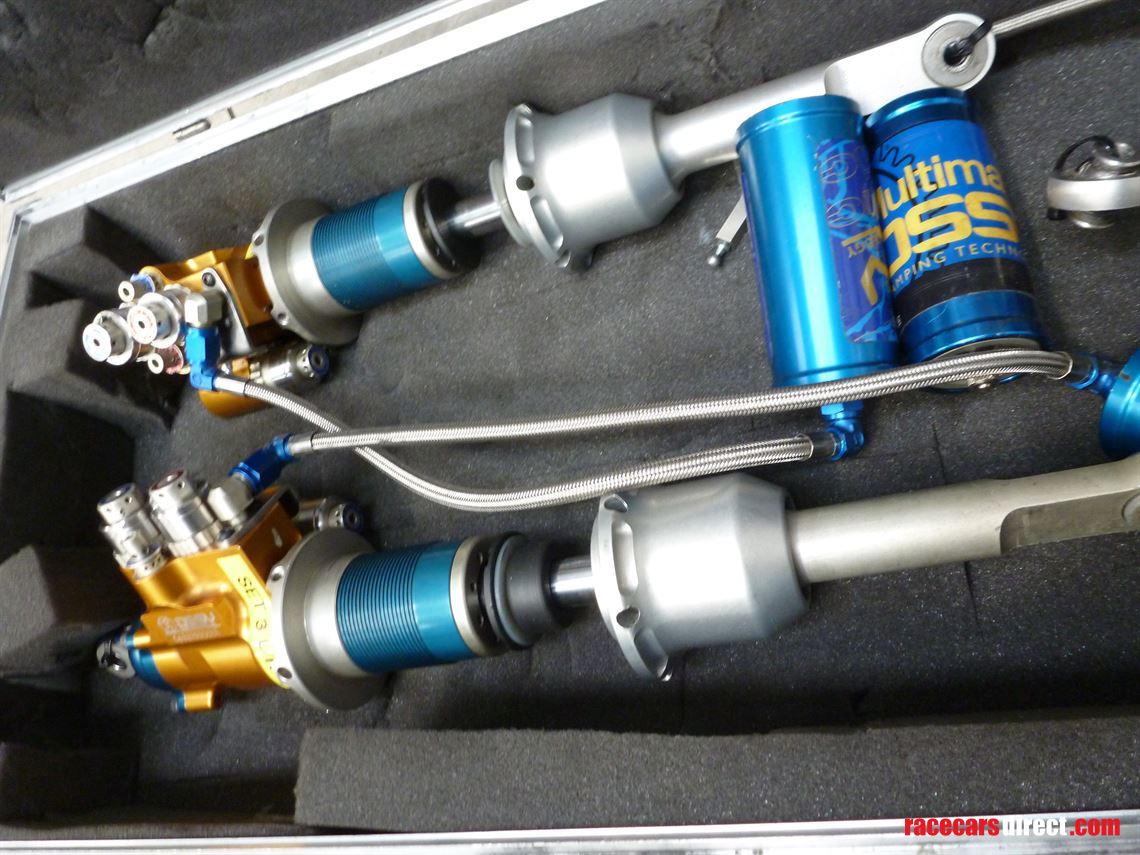http://www.mediafire.com/view/xlimpi480 ... resis2.JPG
Well sorry i can't get the image to display. The direct link should work
Yup. Academic, and maybe even silly, especially if you are not building dampers, but your "negative stiffness" gives strong clues as to the reasons that it may be observed in a damper.Greg Locock wrote:I can get the same effect with a simple model if I put a negative stiffness in series with the damper, but that is a bit silly.
I did miss it. And now I'm trying to wrap my head around it.Greg Locock wrote:You may have missed my subsequent reply, backlash also gives a twisted loop effect.
I think Greg could well be correct.Yawpower wrote:I agree that below 1.25 ips the spread can be attributed to static friction, but what about above 1.25 ips? The damping force at a given velocity is greater while accelerating than while decelerating. The opposite of what you would expect from compliance.Greg Locock wrote:I think that's friction/compliance.
You have "normal" hysteresis around zero which is where the bulk of the stiffness we talk about has an effect during a sine wave test. This is because, as a mechanically compliant item, the rate of change of force with respect to time is greatest and this is what creates the hysteretic behavior here. Above the more transient parts of the test you are nearer to steady state or rather the input is relatively slowly changing. Hysteretic behavior here is more attributable to valving, shims, flow porting, etc. "Negative" hysteresis here is not hard to create. On that note, neither is "positive" hysteresis.Yawpower wrote:I believe that "negative hysteresis" was mentioned earlier in this thread. Possibly this image will spark further conversation.
Above 1.25ips on this plot is likely hysteresis in shim deflection. Think of the shims as having frictional behavior in their deflection profile because sometimes they do. As they open they don't deflect as far as they would if there was zero friction. Therefore, coming from the closed position they are biased in the closed direction creating less flow area and more shock force. After you force the shims to max deflection at your peak test speed they now reverse direction and remain biased to the open direction. Thus remaining further open than before as you cross the same speed which increases flow area and reduces force.Yawpower wrote:I agree that below 1.25 ips the spread can be attributed to static friction, but what about above 1.25 ips? The damping force at a given velocity is greater while accelerating than while decelerating. The opposite of what you would expect from compliance.

Hello Marcush, glad to hear your reply here. I actually tried a few times sending you PMs but never managed, maybe it is because I am new to this forum, don't really know. A long PM just remained in the outbox.marcush wrote: ↑29 Mar 2021, 01:26These dampers are shimmed for a high downforce car (lmp) and so they are configured for high vertical load , thats possibly double force of what is needed for a non downforce car .....you don't know the motion ratio , of damper/wheel travel is .
a flat bottom lmp car also runs zero droop at the front to keep the front edge of the floor as close ti the ground as possible .
LMP 1/2 uses Carbon brakes so front
bump force damping (low speed damping) needs to be dramatic .
So you will have something like 60 to 100kg springs in a Elise type track car if I remember correctly and these dampers have a lot of adjusters (high speed bump/rebound and low speed bump and rebound . Without a dyno curves its
impossible to know if the shimming and bleed is anywhere near what you need and adjustment range is enough
but first things first here:
fitting these beauties in your car ,you will first need to establish closed and fully extended lengths and compare with what is installed in the car .The fully compressed value cannot(!) be shorter or longer than your original part .droop travel can be less , maybe must be less .
Send a pm if you really want to go ahead with this .
Hi GregGreg Locock wrote: ↑29 Mar 2021, 02:21They look like a remote reservoir electrically valved damper. Is that right? They'd be great fun for all sorts of science projects (as we call them). UWA ran with them for FSAE-A a long time ago.